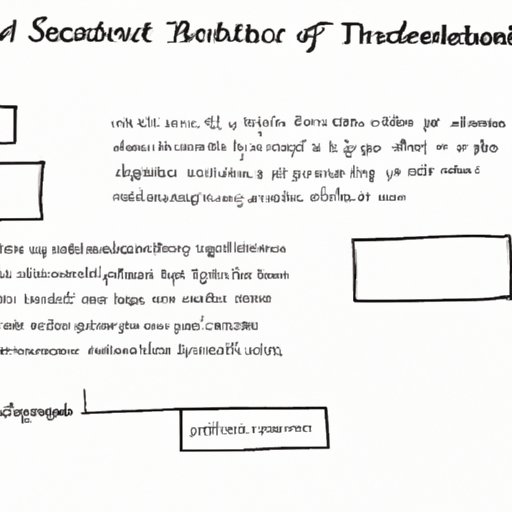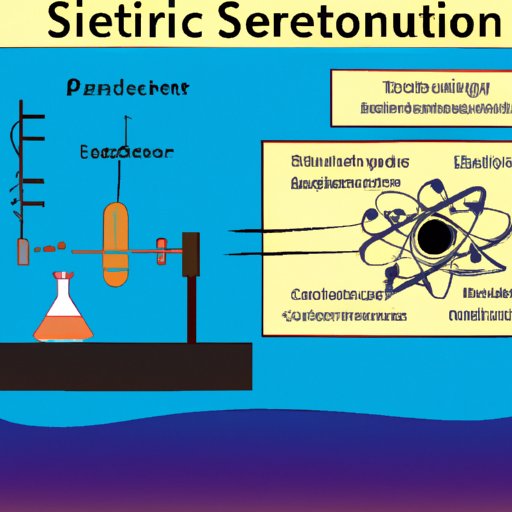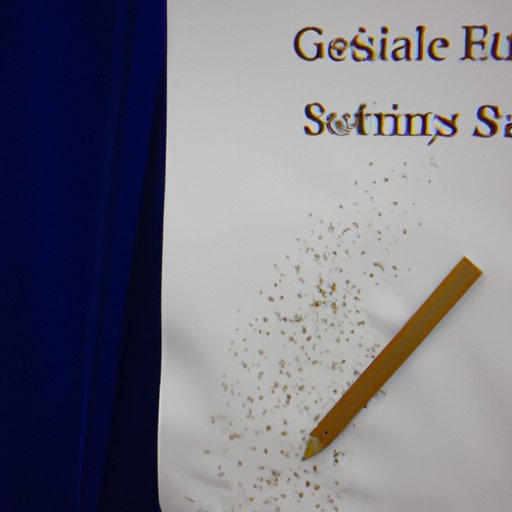Introduction
An abstract is a short summary of a larger project or paper. It should be written in a concise manner and typically contain between 150-250 words. In a science fair project, an abstract is a one-page summary of your work and its results. The purpose of an abstract in this context is to provide potential viewers with a snapshot of what your project is about and what they can expect to learn from it.

Outlining the Components of an Abstract for a Science Fair Project
When writing an abstract for a science fair project, there are four key components that should be included: the goals of the project, the methods used, the results of the project, and the conclusions of the project. These components allow the reader to understand what you set out to do, how you did it, what you discovered, and what your overall takeaway was.
Demonstrating How to Write an Abstract for a Science Fair Project
When writing an abstract for a science fair project, it is important to choose the right words. Using precise language will help ensure that your message is clear and direct. It is also important to be as concise as possible. An abstract should capture the essence of your project in just a few sentences, so avoid adding unnecessary details. Finally, make sure to keep it within the word limit. Most science fairs have a maximum word count of 250 words, so be sure to stay within that limit.

Tips on Writing an Effective Abstract for a Science Fair Project
When writing an effective abstract for a science fair project, there are several tips to keep in mind. First, be sure to be clear and direct. Avoid using vague language and instead use specific words and phrases to convey your message. Second, make sure to include only relevant information. Your abstract should focus on what you did and the results of your project, without going off on tangents. Third, use active voice whenever possible. Active voice helps to make your abstract more concise and easier to read.
What Not to Include in an Abstract for a Science Fair Project
When writing an abstract for a science fair project, there are certain things that should not be included. Personal opinions should be avoided, as the abstract should focus on facts and results. Unnecessary details should also be avoided, as the goal is to be as concise as possible. Finally, technical jargon should not be used unless it is absolutely necessary. If you must use technical terms, make sure to explain them clearly.

Different Types of Abstracts Used in Science Fairs
There are three main types of abstracts used in science fairs: descriptive abstracts, informative abstracts, and critical abstracts. Descriptive abstracts provide an overview of the project, including its purpose and the methods used. Informative abstracts provide more detail than descriptive abstracts, including the results and conclusions of the project. Critical abstracts go even further, providing an evaluation of the project and its implications.
Examples of Successful Science Fair Abstracts
To get a better understanding of how to write an effective abstract for a science fair project, here are three examples of successful abstracts:
- Example 1: This project aimed to determine the effect of fertilizer on plant growth. A controlled experiment was conducted using tomato plants. Five different types of fertilizer were tested over a period of six weeks. Results showed that fertilizer type had a significant effect on plant growth rate and size. The most effective fertilizer was found to be organic compost.
- Example 2: This project examined the effects of light intensity on photosynthesis rates in spinach leaves. Six samples of spinach leaves were exposed to different levels of light intensity for two hours. Photosynthesis rates were measured using a spectrophotometer. Results showed that light intensity had a significant effect on photosynthesis rates. The highest photosynthesis rate was observed when the sample was exposed to the highest light intensity.
- Example 3: This project investigated the relationship between temperature and the rate of enzyme activity in potato cells. Potato cells were incubated at five different temperatures for 30 minutes. Enzyme activity was measured using a spectrophotometer. Results showed that temperature had a significant effect on enzyme activity. The highest enzyme activity was observed when the sample was incubated at the highest temperature.
Conclusion
Writing an abstract for a science fair project can seem intimidating at first, but it doesn’t have to be. By following the guidelines outlined in this article and practicing writing abstracts, you can become a pro at crafting effective summaries of your projects. Remember, the purpose of an abstract is to give potential viewers a snapshot of your project and its results. Be sure to include all the key components, choose the right words, and keep it within the word limit for best results.
(Note: Is this article not meeting your expectations? Do you have knowledge or insights to share? Unlock new opportunities and expand your reach by joining our authors team. Click Registration to join us and share your expertise with our readers.)
